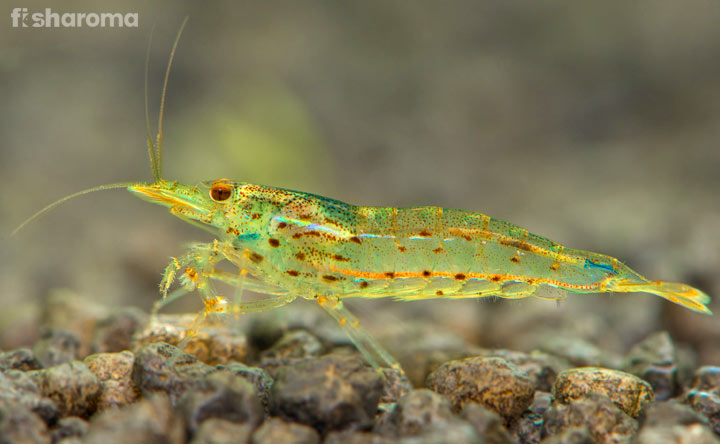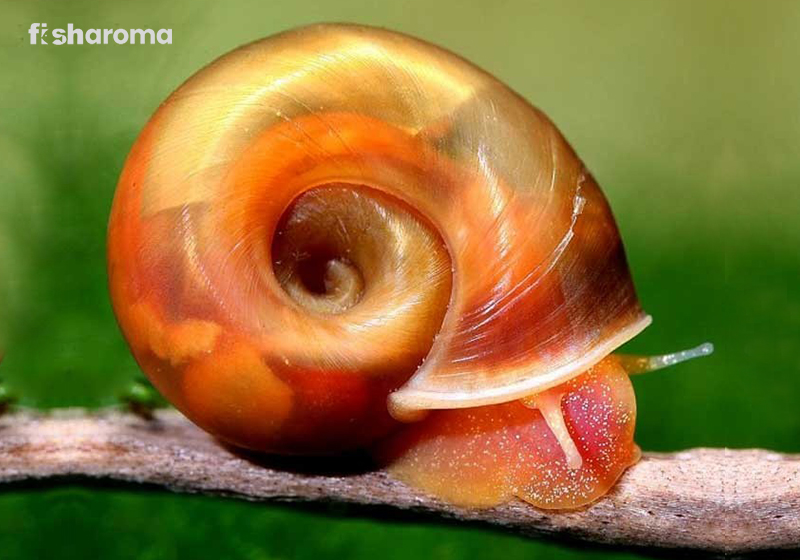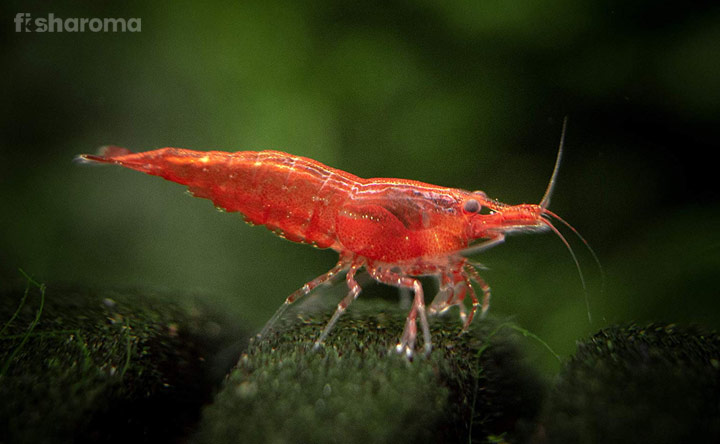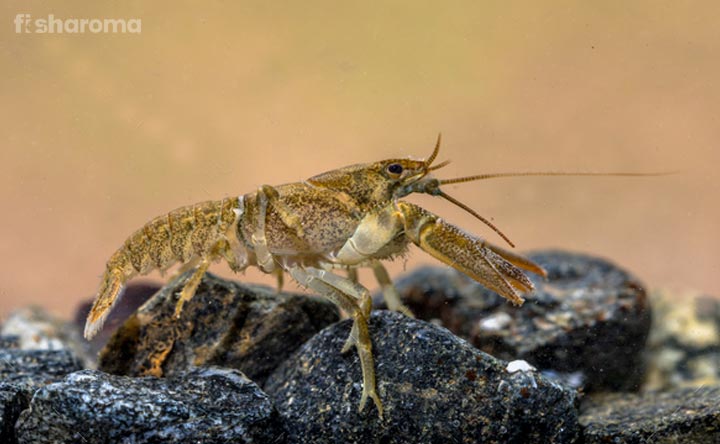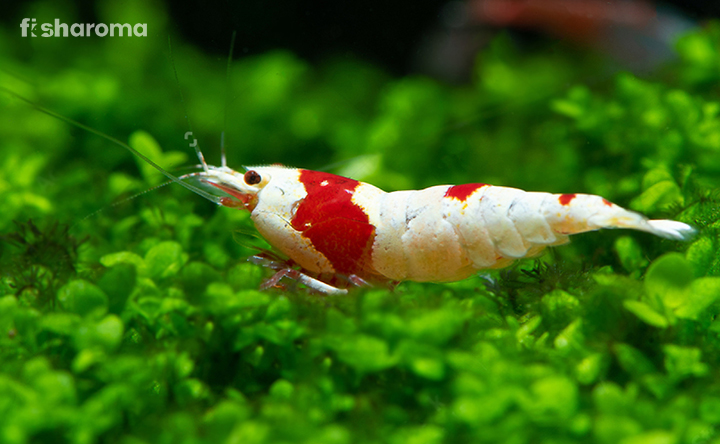Mystery Snail: Detailed Guide on Care, Diet, Breeding and Others
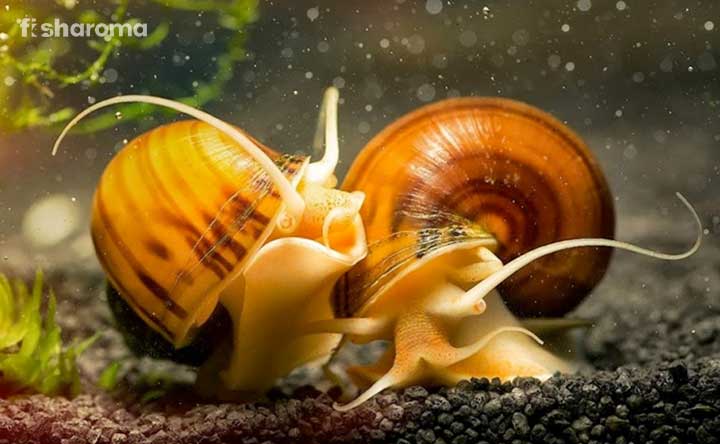
- Origin & Habitat of Mystery Snail
- Appearance of Mystery Snail
- Behaviour of Mystery Snail
- Lifespan of Mystery Snail
- Diet of Mystery Snail
- Tank Requirements of Mystery Snail
- Water Requirements for Mystery Snail
- Compatibility of Clown Killifish
- Breeding of Mystery Snail
- Diseases and Treatment of Mystery Snail
- Summary
Mystery Snail, a freshwater Gastropods, with their amazingly unique appearance, enhance the beauty of your aquarium, as they quietly lay over substrates or calmly move on rocky crevices. With their iridescent body and swinging tentacles, Mystery Snails are just a very popular creature.
Mystery Snails are very easy to take care of, as with their capability of cleaning away algae and dirt from your aquarium, they are adjustable to every kind of atmosphere.
With numerous other names in their crown, these critters are extremely adorned by many aquarists, thus paving our way to get you more accustomed to this species. This guide will provide you with every necessary information regarding your pet Snail. Let’s get started!
Key Specifications of Mystery Snail
In order to know the details of the key features of the mystery Snails, we need to look through the following details.
| Scientific Name | Pomacea bridgesii |
| Origin | South and North America |
| Lifespan | 1 year |
| Colours | Black, purple, white or gold |
| Temperament | Peaceful and calm |
| Size | 2 inches |
| Diet | Herbivorous |
| Family | Ampullariidae |
| Compatibility | Any community |
| Tank Size | 5 Gallons |
| Care Level | Easy |
Overview
With large, colourful shells, these Mystery Snails are given the name for a specific reason; where they give birth to young snails during Springs, all of which mysteriously disappears.
These snails have an additional capability by which, they clean the whole tank, remove all types of algae off the tank walls, and keep the substrates clean. These peaceful species are of compatible nature, where they can easily thrive with any other fish or shrimps. Mystery Snails have different names like Golden Mystery Snails, Mystery Apple Snail and Spike Topped Apple Snail.
These freshwater creatures are perfectly adaptable to any nature, and are particularly known for dwelling in planted community tanks. Their algae-scraping feature makes them a preferable choice to most of the aquarists.
Origin and Habitat of Mystery Snail
Native to South America, Mystery Snails are also available typically in abundance within regions of Brazil, Paraguay, Peru and Bolivia and North America. In North America, these species are known for being invasive.
These snails are found in different types of freshwater bodies like swamps, rivers or ponds. The main reason for dwelling in ponds and under-waters is to have the facility of having algae, dead plants and decomposed materials. This makes it very important to keep your aquarium full of plants.
Appearance of Mystery Snail
Snails give a clear picture of a typical spiral whorl at the top that gradually expands down to an opening. There are almost 6 whorls on their shell. Mystery Snails are no different, apart from the fact that their top or apex is more to their side of the aperture. The adult Mystery Snails have only four spiral whorls and all of them keep a small structure.
All the Mystery Snails, be it any colour variety, come with an amazing iridescent pattern on their body. Moreover, Mystery Snails have unique organs in comparison to other species; with gills and lungs, they can draw in extra oxygen as per their need. Though gills are present, still they prefer to inhale through actual air. They have siphon-like extended and tubular long organ, that sticks out of the water, moves rapidly and sucks in air.
The sensory tentacles above their head are half their body length, and these attachments are helpful in finding food. Moreover, exactly under the tentacles, lie the small set of eyestalks. Since there are no other sensory organs, the eyestalk can grow completely in a new way after a few weeks in case it is severed. Under the eyes, they have their mouth, where there is a set of tentacles that help in feeding.
Mystery Snails have a specific attribute known as operculum; a hard flap that acts as a protection to the Snail’s shell. When the Snail feels any kind of danger, they slide into their shell and promptly close the operculum. This sealing procedure helps to protect the entire soft body from any threat. Operculum helps to prevent desiccation. Loss of moisture, or drying out can be detrimental to the snail.
Colour
These amazing invertebrates come in different colours, which include Golden, Ivory, White, Purple and Albino. The Albino coloured snails have a specific feature of a white body along with a striped brown shell.
Size
Mystery Snails can grow up to a maximum of 2-inch diameter, and some specimens might remain around 1 inch.
Behaviour of Mystery Snail
These small invertebrates are typically peaceful, while they spend most of their time finding algae. These algae generally build upon tank walls and the snails slowly climb up to have them.
The stunning behaviour of these critters is to slide inside their shells and closing the operculum, the very moment they feel threatened by an aggressive fish. Keeping them active will help you to keep your tank clean, as more playful snails will do the cleaning stuff more quickly.
They can even climb at top of the tank and sometimes, they might free themselves to fall to the bottom. The exciting thing about them is that these little snails are not interested in whatever happening around them, and prefer to stay to themselves. However, these peaceful creatures are faster than you think.
Lifespan Of Mystery Snail
These mysterious creatures live for one year and even with perfect tank conditions, great care and immense look-after, these species will not remain with you for more than their average lifespan.
Diet of Mystery Snail
These little herbivorous beings are great scavengers and are not at all fussy about anything they eat. The base of their diet is rotten leaves, decomposed plant materials and vegetation. For the purpose of providing them with a natural source of food, it is advised to keep thick vegetation in the aquarium. The plants will grow, shed leaves and this will be the perfect diet for your Mystery Snails.
Their diet also includes algae, that gets attached to the substrates or the tank walls. Their important activity includes scavenging algae, decomposed matter and vegetation in the wild; this holds true for the captive position in tanks also.
They scrape these algae through Radula and complete their feeding requirements. This Radula creates a tire pattern through the track of the snail and helps the creature to suck algae.
However, in order to keep your Mystery Snail in check, here goes a list of a healthy options you can consider while feeding them:
- Zucchini
- Broccoli
- Spinach and
- Romaine lettuce
For the ease of growing algae, tank keepers must provide a smooth surface to the tanks so that algae can grow. However, in case algae grows slowly, you can also add sinking pellets and algae wafers
Tank Requirements of Mystery Snail
These snails are complete scroungers and they completely depend on vegetation for their livelihood. The tanks for Mystery Snails must have thick plants and even floating vegetation will do. With a proper tank size and uneven substrates, these Mystery Snails are at their best in your water tank. Let us quickly go through the necessary tank requirements for these snails.
Tank Size
If you plan to keep Mystery Snails in your aquarium, you don’t have to worry about the tank size. These snails, however do well in community tanks, which can hold at least 5-10 gallons of water.
For every 5 gallons, you can easily pet 2 Snails as the large water condition and tank space will provide them room to move freely.
Tank Lid
When it comes to Mystery Snails, it is always recommended that you keep a sturdy tank lid as they have the habit of crawling up to smooth tank walls for finding algae. They might come out of your tank and this is something we don’t want.
Moreover, keeping your tank lid tight will keep the dirt away and resist anything poisonous to get accumulated in the water.
Substrates
These bottom-feeders find the substrates as their key source of happiness and diet. It is preferable that you don’t keep fine substrates in the tank, as these fine substrates make it impossible for snails to move faster. The Mystery Snails need a good resistance at their bottom area, so that they can have an easy movement. If the substrates are fine, it becomes tough for these snails to move.
Recommended that you fill up the tank bottom with coarse sand, gravel and pebbles. Since they have a shell all over their body, these substrates cannot hurt them. However, you must not put anything larger than the snail as this will create an obstacle for them.
Filter
A filter is not that much important for Mystery Snails, however, if you have a community tank, you can keep it for other fishes.
Still, you can keep a slow-speed filter or sponge filter (as it uses a gravel vacuum to draw in all debris), so that the water remains clean and there is continuous movement. You can choose Hang-On-Back filters or Canister filters as they produce biological filtration. Reducing waste in the water will keep the creatures healthy; a healthy and strong ecosystem will be maintained in the tank also.
Ornaments
You can always add driftwood and rocks of different shapes in the tank so that the environment is enriched. Mystery Snails prefer to hide at play, hence it is better to keep caves, crevices and dense canopies to provide them with cover.
Presence of Flora
Mystery Snails don’t have the nature to eat live plants, which gives you the freedom to keep amazingly flourished plants in your aquarium. However, you must ensure that these plants have broad leaves, so that they can provide a slithering surface to the snails. Moreover, broad leaves, while dying, will produce a large amount of decomposed material that acts as a source of food for these snails.
You can keep Java Ferns, Java Moss, Sword Plants, Hornwort or Anubias and if they rot and keep falling on the tank surface, your snails will clean it.
Lighting
Mystery Snails can go well with normal dim community tank lighting, where the darkness will prevail more and the place will be moist. Since they live in an aquarium, in that case, they don’t have to save themselves from predators; the main reason of Mystery Snails to dwell in dark.
It is best if you keep diffuse lights, and completely avoid direct sunlight or any kind of artificial light. Since these fishes are cold-blooded, they cannot tolerate the warmth of intense lighting.
Cleaning Method
It is imperative that you clean the tank on a frequent basis, so that there is no chance of accumulation of dirt within the tank. The dominant factor is to keep your pet safe and healthy. Though they thrive on decomposed material and algae, that does not imply keeping the tank unclean.
Use a soft cloth to gently scrub the walls of the tank and keep a certain amount of algae on it, it becomes easy for the Snails to have them. While cleaning the bottom of the tank, try to keep the dead leaves in one corner, but don’t keep it scattered as it might disgrace the other tank mates. Your Snail will slowly perform their role as a cleaner and eat the dead leaves; thus, keeping the tank clean.
Water Requirements for Mystery Snail
The blog itself says that these pets are water residents and in order to luxuriate their life, they need to have a proper water parameters. The temperature, pH and hardness are a few important requirements that are to be maintained for Mystery Snails:
Temperature
These Mystery Snails are cold-blooded and they prefer not to stay in direct warmth. Their temperature must range from 20-28 Degrees Celsius, which is a mixture of moderately warm and cold water. This water temperature will keep your fish hale and hearty.
pH Level
The pivotal factor for these Mystery Snails is maintaining the pH level for their tank. In doing so, you must keep the pH level between 7.6 to 8.4. The reason behind keeping the relatively high pH level is that, low level of pH has the tendency to dissolve calcium carbonate shells of these snails; thus, leaving snails open. This increases the chance of getting harm from other tank mates.
Once you observe a crack in the shell of your pet Snail, as a result of brittle texture or thinning, you must keep an eye out for the depreciating levels of pH and Calcium in the tank. Immediately take action to increase the level along with the addition of calcium supplements. This will eventually make the shells strong and heal the degrading condition of the Snails.
Hardness
Your algae-eating Mystery Snails need hard water for the purpose of growing shells properly. A general hardness of 7-9 dGH is very important, where there must be a complete absence of salt. However, you need to increase the level of calcium within the water by putting limestone and corals. Your cold-blooded pet can easily feel the calcium concentration within water where they prefer to grow healthily.
While keeping the water on the harder side, maintain the alkaline hardness within 12-18 dKH.
Replacement Method
The replacement of water is very important, as no living being can live in an untidy place for long. In order to keep these Snails fit and fine, you need to replace the water every fortnight or once a week. However, keep all the parameters the same once you refill the tank.
Since these Snails are sensitive to copper, you must keep an eye on absolute less amount of this mineral in the tank water, if you use tap water for cleaning or filling it.
Try not to replace the water wholly, as it might remove all algae, and there will be no algae left for your Snails till they start gathering again.
Compatibility of Mystery Snail
Since these little critters are peaceful, and prefer to mind their own business, it is always best to keep fish that will not bother them much. Moreover, Mystery Snails can also live with other Gastropods, in case you want to make this (a Gastropod tank) a theme. You can consider keeping Ramshorn Snails, Ivory Snails and Nerite Snails.
As we have mentioned above that the Mystery Snails are only concerned with their feeding requirements, and do not much care about the happenings in the tank, you can also keep Betta fishes with them. However, you must provide them with the proper quantity of food in the proper timing, which will also keep them aside from bothering each other.
However, overcrowding is a strict no-no for these aquariums, as having many inhabitants will damage the shells of the Snails or might even degrade their health.
Suitable Tank Mates
One must consider that these Snails might be eaten by big fishes, for which peaceful small community must be paired with them.
- Guppies
- Amano Shrimp
- Killifish
- Cherry Shrimp
- Tetras
- Ghost Shrimp
- Cory Catfish
- Otocinclus
Unsuitable Tank Mates
However, the unsuitable tank mates are also listed below, for your sake of knowledge to not keep them in the same tank.
- Oscars
- Crayfish
- Cichlids
- Botia lohacata
- Goldfish
- Shrimps of Macrobrachium family
Breeding of Mystery Snail
In case, you are planning to pet more Snails and still don’t want to buy them, you can easily breed these species as they are easy to breed. The Mystery Snails are Gonochoristic, which implies there must be a presence of male and female for satisfying the purpose of reproduction. These species can mate even without any changed water conditions.
As observed by different aquarists, the male snails crawl from behind towards the female, where they find it easy to crawl over the shell. At the last whorl, where the genital aperture lies, they insert the penial sheath; thus completing the whole mating process.
During spawning, the female Mystery Snails will lay the eggs above the water surface and they prefer to put these eggs in a frothy cocoon. This helps to identify the eggs and can even remove the eggs if you wish not to have any Snail babies. The eggs are white or pink in colour or sometimes yellow. While laying eggs, females crawl out, and they need a lowered water level as they lay eggs on the walls of the tank.
The oviposition occurs during the night, at around 23 Degrees Celsius, where, from a single clutch 20-40 adults can be born. Though the clutch can contain 50-200 eggs, still not all are always born (as we previously said they mysteriously disappear). You must avoid breeding your Snails too much, as this might overcrowd the tank and negatively impact the nitrogen cycle.
If you don’t find any dark spot (baby snails inside eggs), you are free to remove the clutch after 3-4 weeks.
Diseases and Treatment of Mystery Snail
Mystery Snails don’t get plagued with any kind of disease, which is obviously a good thing to know. However, they are very sensitive to quality and elements of water, which include warmth and copper. A fairly little change of water parameter or low quality of water will make them sick, which can further lead to parasites (Rat Lungworm) in them. These parasites don’t have any treatment as such and are enough to bring a Mystery Snail to death.
They can also grow Grub Worms, where small white-coloured cysts are observed on your Snails’ foot. This creates problems for other tank mates (mainly fishes) as these mix with the water if ruptured. Then gradually they encyst the fish and remain there until the host fish dies.
There can be some other snail diseases that might cause shell deformities, or uneven shell growth. They become sloths and don’t actively move if they are sick; which demands immediate treatment. Quarantine your Snail and apply fish epoxy for the safety of fish.
Every once in a while, you need to catch your Snail and hold it in hand, as continuous, prolonged floating makes them weak and sick. This does not generally happen with any other fish or snail species, but Mystery Snail.
Summary
Mystery Snails stand out from the category of Snails because they are good addition to the home aquarium, where they can stay with any other fishes of the aquarists. With their peaceful nature, these colourful critters help to minimise the waste in your tank.
You will just sit back and observe quietly the graceful movement of these species. Bring these home and enhance yourself in guiding them through our Care Guide.
- Baby Snails don’t need to be fed differently, as they fall from clumpy cocoon to the bottom and start feeding on what their parents eat.
- Almost 90% of the juveniles survive during the first eight days of their survival by depending on algae film on the tank wall, whereas, 65% will survive only on crushed food.
Care Guides for Similar Pets
- Ramshorn Snail Care Guide – If you are tired to keep fish in your tank, it is high time that you gracefully brighten your tank with these amazingly red-coloured Ramshorn Snails. Read our article to know more!
- Otocinclus Catfish Care Guide – Do you want to keep your tank clean without much hassle of manual cleaning? You can keep these algae-eaters and experience peaceful fish keeping at home.
- Flower Shrimp Care Guide – Mystery Snails are comfortable in living with their companions, which include Ghost Shrimp. Read our care guide to know more about their requirements!

